Easter is the most important and, without a doubt, the most revered celebration in Orthodox Christianity. The symbolism involved in all the spiritual and physical preparations of the Sarakosti (fasting period, or Lent) leading up to Easter Sunday is deeply moving for the faithful. During Holy Week, they try to forge a connection with the events leading up to the day of the Resurrection. In experiencing this intense religious event, Orthodox Christians everywhere, and Greeks especially, do not limit themselves to the celebrations that take place in the church or at home.
They organize all types of events, trying above all to highlight their compassionate connection with this divine drama, and their jubilation at the Resurrection. Throughout the entire Holy Week, there are a plethora of events held all over Greece, from the islands to the mainland. Good Friday everywhere features the reverential evening Procession of the Epitaphios, in which a religious icon, typically consisting of a large, embroidered and often richly adorned cloth bearing a likeness of the dead body of Christ is carried through the streets, but there’s imagination and variety in the dozens, perhaps even hundreds, of other traditions that take place throughout this holiday period, starting with Lazarus Saturday, the day before Palm Sunday, and continuing on beyond Easter Sunday.
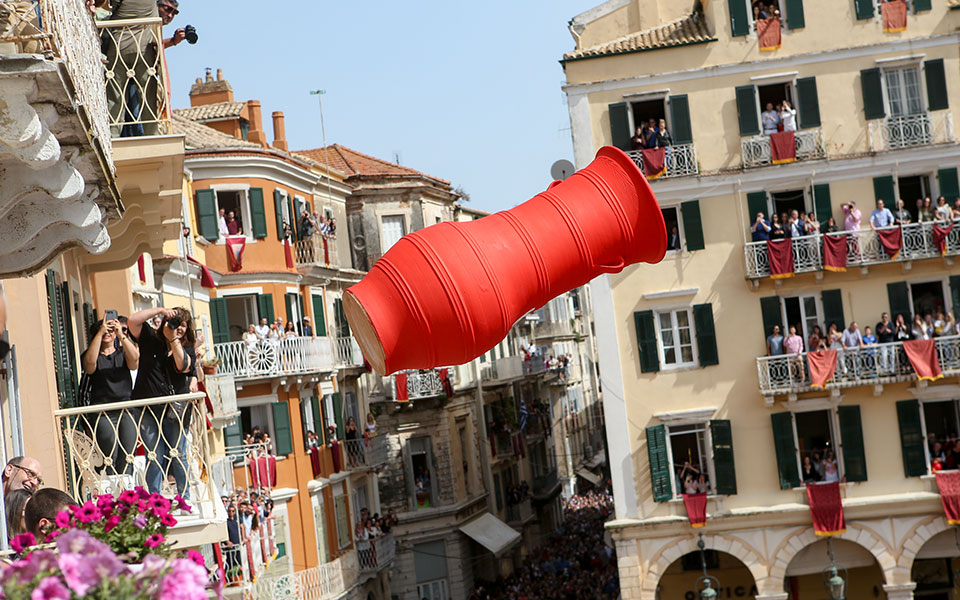
© Κatapodis Stamatis/INTIME NEWS
Traditions and events from Serres to Crete
One of the most interesting traditions kick-starting Greek Easter takes place in northern Greece, in the Serres, Imathia and Kozani regions, and begins on Lazarus Saturday. The kaladismata connects the raising of Lazarus with the resurrection of Christ a week later. Girls, dressed in the area’s traditional costumes and holding effigies of Lazarus, go from house to house singing carols and accepting gifts, which they put in their baskets. They are given unpainted eggs, which they will dye red on Holy Thursday, as well as traditional cookies made with flour, sugar and herbs in the shape of a figure wearing a shroud, representing Lazarus. These girls, who call themselves “Lazarines,” end their walk through town with a dance in the square, usually directly outside the church. The celebration continues the next day, on Palm Sunday, with dancing and singing after the church service in front of crowds of locals and visitors. Everything ends after the Vespers service, which denotes the beginning of Holy Week.
On the Ionian islands, musical tributes and other festive activities take center stage. On Corfu, local brass bands compete with one another to see which one can best convey the sorrow and pain of the Easter Passion and the joy of the Easter Resurrection. Another tradition there is that of the “Botides,” in which clay jugs are smashed on the streets, with visitors and residents gathering to watch and to collect shards as souvenirs. Something similar takes place on Lefkada, where they collect the shards of the small clay pots that locals smash on Holy Saturday morning, as a spell to ward off grievous and mournful feelings.
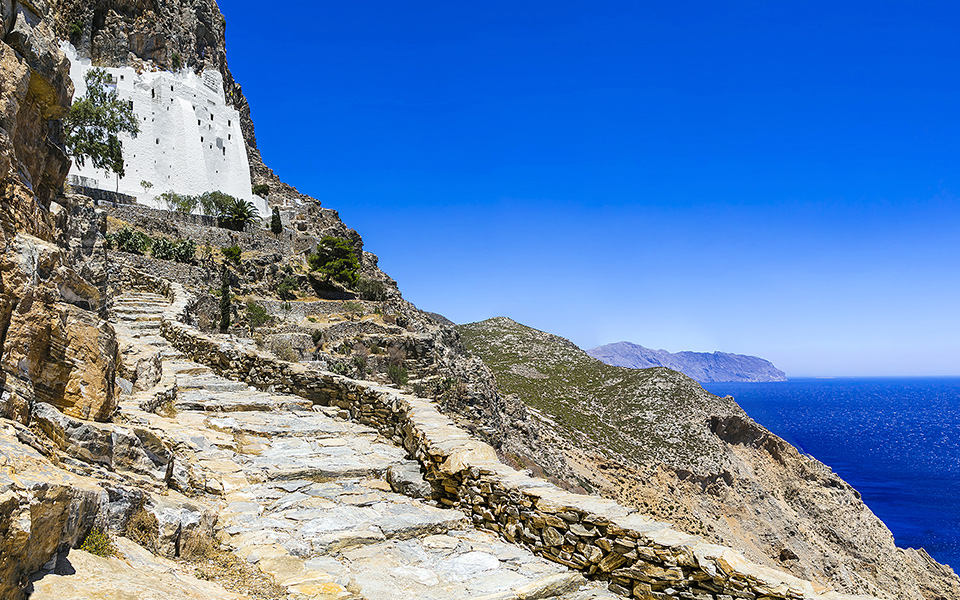
© Shutterstock
If your travel plans bring you to Tinos, be sure to accept the lemon leaves that are offered around everywhere you go; they are thought to bring good luck to men, and a good husband to women. The Easter Sunday celebrations that take place across the island are particularly enjoyable gatherings.
On Amorgos, it’s not an event per se but rather a beautiful scene that should not be missed. Flower petals are strewn on the streets and clay lanterns illuminate the way as you follow the Epitaphios procession on Good Friday or participate in the procession of the icons from the Monastery of Panagia Hozoviotissa on Easter Sunday.
A very special Easter tradition, the “vourna”, takes place in the village of Aghios Isidoros on Rhodes. Only those who are unmarried can participate, and they need to follow a series of rules and regulations. The ritual begins on Holy Saturday and finishes on Easter Monday, with offenders being punished by dunking in a “vourna” (a trough filled with water) with their clothes on.
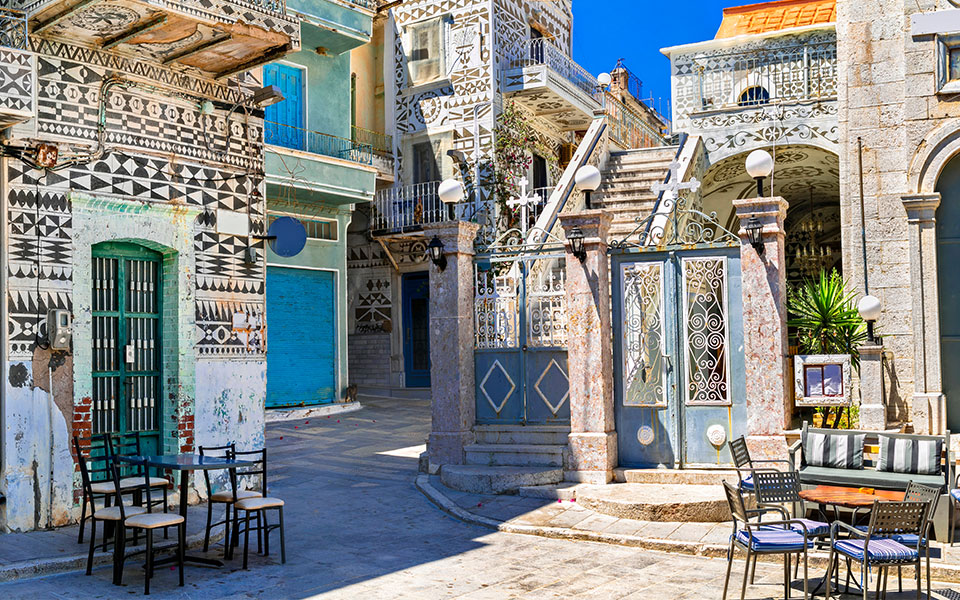
© Shutterstock
If you find yourselves in Morfovouni in Karditsa on Easter Sunday, you ‘ll have the chance to see the “Diplo Horo” (“Double Dance”): the priest leads the circle, followed by two double rows of dancers, one of girls and one of boys, as an expression of jubilation for the Resurrection of the Lord. A different experience can be found at Vardousia, where the tranquil beauty of the countryside awaits on dozens of hiking trails crossing verdant slopes –Easter is also the beginning of spring, a veritable explosion of nature! If you plan your hike carefully, you’ll be able to visit several small churches holding stirring ceremonies, as well as some local spots serving tsipouro and meze of grilled meat.
The rousing announcement of the resurrection as it takes place in the controversial firecracker and bottle-rocket traditions of the Saitopolemos in Kalamata and the Rouketopolemos in Vrontados on Chios often turns into a celebratory battle zone that, unfortunately, has seen its fair share of tragic accidents. Nevertheless, Kalamata and Chios are both gorgeous destinations that are particularly enchanting this time of year, with a wide variety of activities for visitors.
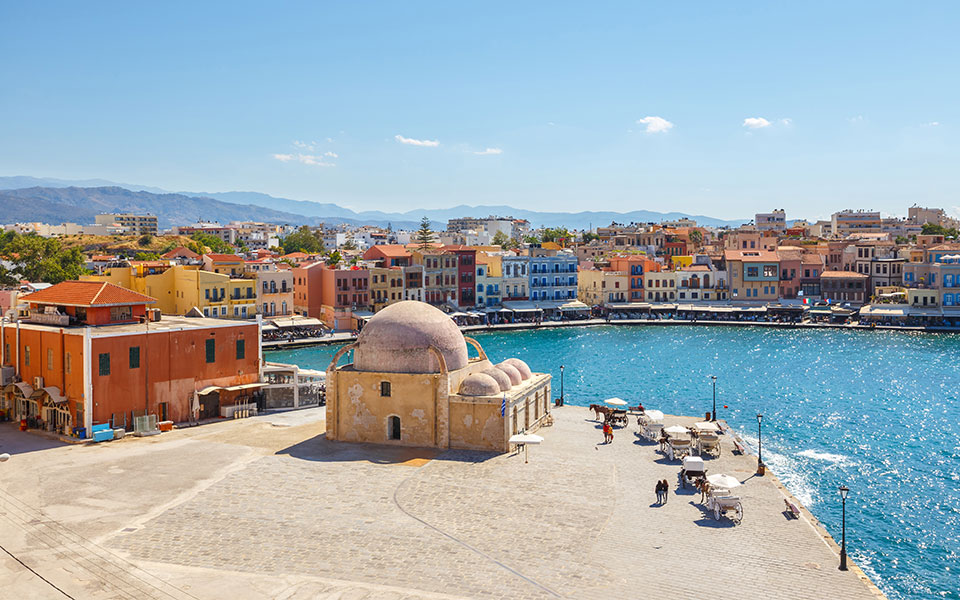
© Shuttestock
In Mystra, Laconian Mani and Monemvasia, the presence of the Byzantine past is pervasive, with a web of connections linking history, religion and local tradition. In the town of Leonidio in Tsakonia in the eastern Peloponnese, the skies are filled with glowing sky lanterns, paper hot air balloons fueled by flammable material that sends them aloft on Holy Saturday evening and Easter Sunday. To the west in Eptalio Ilias, locals take advantage of the athletic legacy of the Olympic Games to organize a series of horse races on Easter Monday, offering “kouloures” (local pastries) as awards to the winners.
On Crete, the largest island in Greece, there are numerous events and historical traditions. On the evening of Good Friday in Irakleio, the Epitaphios processions from the churches of Aghios Minas, Aghios Titos and Aghios Dimitrios converge for a special ritual in the square. The “Panagia Dirge” is sung by the young men and women of the city and the priests chant as patient anticipation marks the faces of the participants, who are waiting for the religious celebrations to end before heading to one of the nearby mezedopoleia to indulge in the customary Holy Friday dinner. Another local tradition is the “fournara,” the burning of Judas on the evening of Holy Saturday. In the Voukolies area of Hania in western Crete, a livestock fair is the main event on Good Friday. In the past, this event also served as the occasion for arranging marriages – different customs for different times.
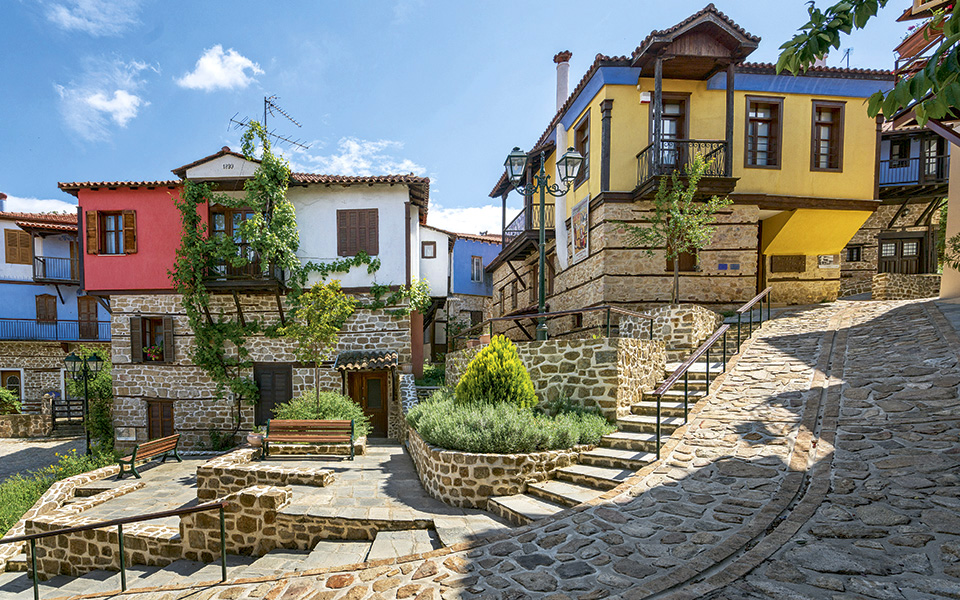
© Perikles Merakos
At Ierissos in Halkidiki, they connect the joy of the Resurrection with an event that has left its indelible mark on this place: the massacre of 400 people by the Ottomans in 1821. They honor their memory on Holy Tuesday with a dance called the “kagelefto” – the line of dancers starts off with just the elderly locals, but soon everyone joins a line of celebrants that stretches hundreds and hundreds of meters. In nearby Arnea, on the same day, an enormous set of scales, or “kantari,” is set up in the main square. Everyone who is suspected of breaking the rules of the Lenten fasting period is weighed, and the results are compared to the previous year’s numbers. The comments overheard throughout are simply hilarious. Further south in Halkidiki, in the village of Sikia, horse races are held on the Tuesday of Holy Week.
In Athens, an important symbolic tradition is the arrival and distribution of the Holy Fire, brought in by airplane from the Church of the Holy Sepulchre in Jerusalem to the Church of Aghioi Anargyroi in Plaka. This unique moment, the transfer of the flame, takes place late in the evening on Holy Saturday.
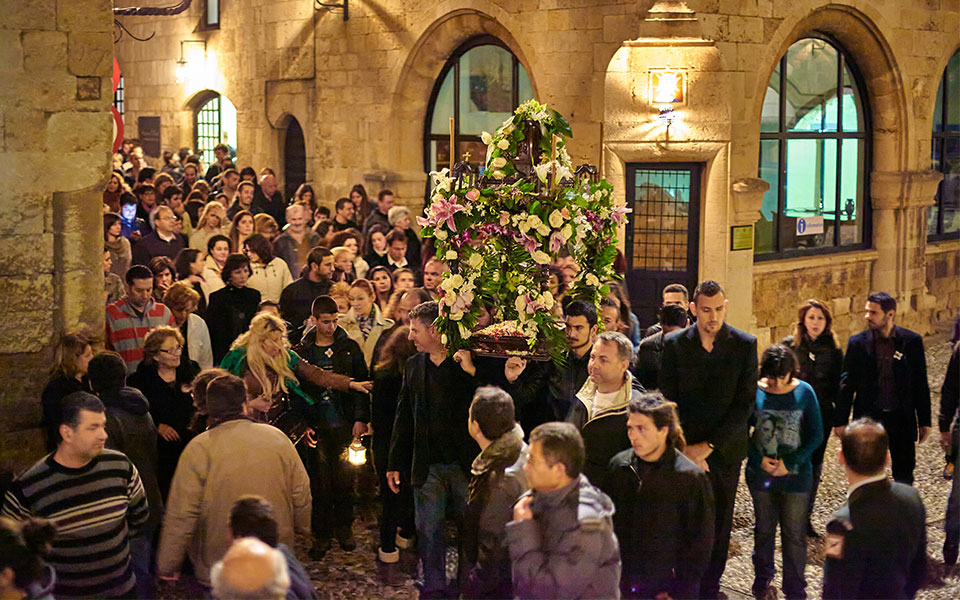
© Giorgos Tsafos
The Epitaphios Processions
The phrase “Women with spices came very early in the morning to sprinkle the grave with perfume” is from one of the well-known hymns voiced during the Epitaphios procession. Despite the universal sorrow that characterizes this Good Friday evening ritual, many communities across the country have made this procession their own special event, all while keeping two thing in common: the decoration of the Epitaphios with spring flowers, and the various hymns sung on the occasion.
On Spetses, Poseidon Square is the meeting point for the Epitaphios processions from four churches, with the young bearers holding their church’s Epitaphios up high to receive a holy blessing. On Hydra, locals keep to the traditions of the “Marine Epitaphios.” Once the procession reaches the shore at Kaminia, the bearers march without hesitation into the sea, spreading the holy blessing to the island’s waters and its vessels.
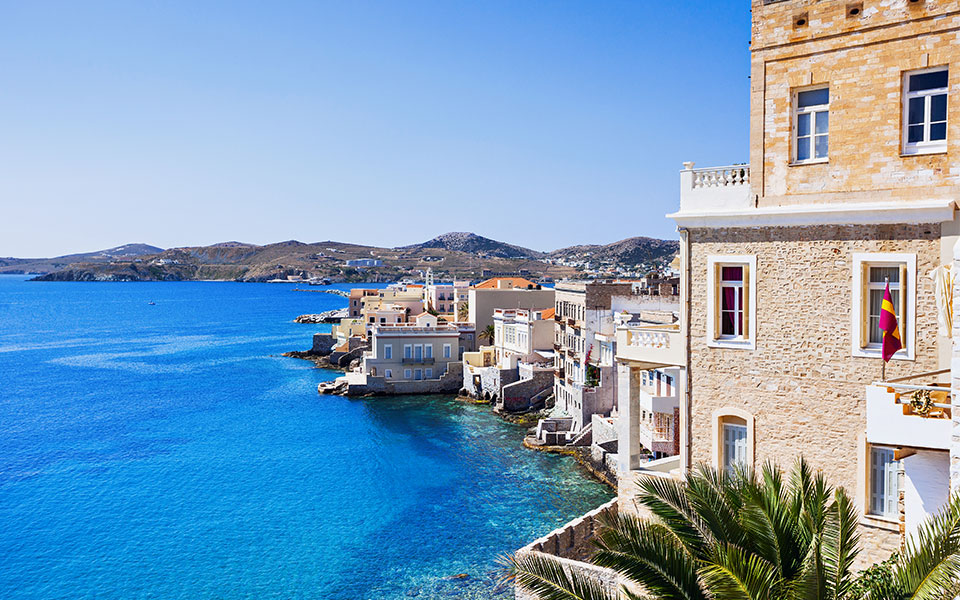
© Shutterstock
Traditionally, the Procession of the Epitaphios takes place in the evening on Good Friday, but in the Ionian islands, things work a bit differently; in 1574, the Venetian conquerors of Corfu ordered the procession to take place on the Saturday morning prior to Easter Sunday. What’s more, along with the icon of Jesus, they also carry the relic of Saint Spyridon, two protagonists in an emotional spiritual ceremony. On Zakynthos, the Procession through the streets of the island’s capital takes place at 4am in the morning, except for the procession that starts from the Church of Aghios Nikolaos Molou, which takes place during the day on Good Friday.
In Syros, the capital of the Cyclades, where Orthodox and Catholic Greeks coexist, there’s a coexistence of traditions and Epitaphios processions as well. On Good Friday evening according to the Orthodox calendar, the Catholic Epitaphios from the Church of the Annunciation and the Orthodox Epitaphios from the Church of the Assumption of the Virgin Mary meet in Miaouli Square in Ermoupoli. The worshipers exchange common prayers, confirming their peaceful coexistence. On Tinos, six processions meet at a central spot in the island’s capital. The exception here is the Epitaphios from the Church of Aghios Nikolaos; it heads for the beach at Makri Kladaki, where the crowds follow the Epitaphios into the sea and the priest delivers funerary rites for those men lost at sea.
Although these are by no means all the special Easter events that take place every year in Greece, one thing is for sure; somewhere out there are Greek Orthodox Easter celebrations that you’ve never seen before.












